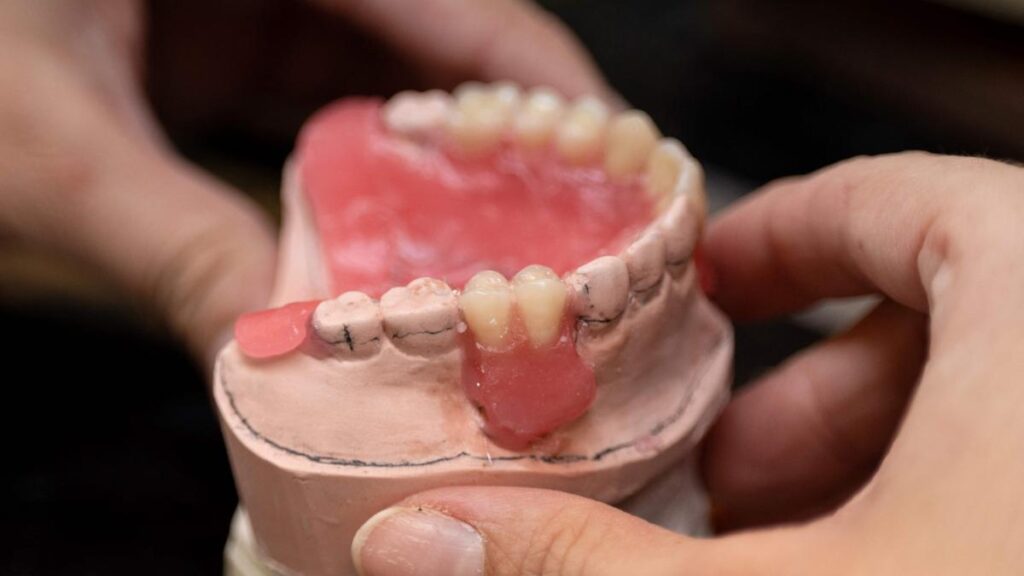According to the World Health Organisation (WHO) Global Oral Health Status Report (2022), dental caries (tooth decay) in permanent teeth is the most common dental health concern globally. Subsequently in India, dental caries and gum disease dominate the oral health landscape.
P. D. Madan Kumar, dentist, professor, Department of Public Health Dentistry, Ragas Dental College, Chennai, points out that dental caries affects nearly 60% of the population, while gum disease, or periodontal disease, is even more widespread, impacting about 85%. Particularly concerning is the emergence of cervical caries, also known as root caries, which is increasingly seen among both young children and the elderly.
Dental diseases and the need for routine checkups
According to Yashwanth Kumar Venkataraman, senior dentist and orthodontist, Chennai, gum disease is the most commonly encountered problems in Indians. “I think 99% of our population at some age or the other would have undergone some kind of gum problem,” he says. Many people mistakenly believe it is limited to occasional bleeding or swelling, but the reality is far more complex. As Dr. Venkataraman explains, “People often visit the dentist only when the damage is irreversible.” Gum disease typically starts with gingivitis, an early stage of inflammation, but if left untreated, progresses to periodontitis, where the gums recede, bone levels drop, and teeth eventually become loose or fall out.
Additionally, as per a report published by the National Centre for Disease Control, Directorate General of Health Services, around 60 million people are at risk of developing dental fluorosis across several states in India. Dr. Kumar, emphasis that the major cause of fluorosis is due to excessive fluoride in groundwater, that is spread across in many regions, contributing significantly to dental issues.
The risks of oral cancer, other diseases
Another concern Dr. Venkataraman notes is the link between broken teeth and oral cancer. “I see at least one case every two months where oral cancer developed simply because of an untreated sharp or broken tooth,” he says. Continuous friction from a sharp edge of a tooth against the inner cheeks, gums, or tongue creates repeated trauma, which over time can cause tissue changes and lead to cancer. “It’s tragic because these cases are entirely preventable,” he says. “A simple fix, like trimming the tooth, capping it, or polishing the edges, could have stopped the cancer from developing.”
“Small cavities might not cause severe pain, so people ignore them,” Dr. Venkataraman points out. “By the time they come to us, the decay has progressed so much that it requires root canals or extractions.” Early detection could save both teeth and money, as a simple filling can last for 10–20 years, while a root canal is costly and may still result in tooth loss after a decade. This lack of awareness about preventive care leads to a lack of regular dental check-ups.
Dr. Venkataraman also emphasises the need to understand that oral health isn’t just about teeth, as it’s linked to diabetes, heart disease, and cancer.
Absence of dental insurance and cost barriers, a major challenge
Addressing the cost concerns, one of the most critical barriers to dental care in India is the absence of dental insurance. While health insurance typically covers surgeries and hospitalisations, dental care is excluded unless linked to an accident.
“Not a single dental hospital in India has insurance coverage for routine or preventive dental care,” says Dr. Venkataraman. “Even private hospitals offer eye care insurance, but not dental care.” This means people have to pay out of pocket for basic procedures like cleanings, fillings, and root canals. The cost deters many from seeking treatment early, allowing minor issues leading to major health concerns. “If dental insurance became part of health schemes, people wouldn’t delay treatment,” he says. “ He stresses that this lack of coverage is a systemic failure, one that pushes dental care into the category of luxury rather than necessity.
The urgent need for awareness
S. Srinivas, HOD, dentistry, Prashanth Multi Speciality Hospital, Chennai, points out the importance of community education. “ Awareness about simple practices like gargling after meals, drinking water regularly to cleanse plaque, and chewing sugar-free gum to stimulate saliva production can greatly enhance oral hygiene. Also, proper brushing techniques, using the right toothpaste, along-side regular dental check-ups are crucial,” he says.
Dr. Venkataraman also stresses the need for the government to launch awareness campaigns in regional languages.
The WHO’s Global Oral Health Action Plan (2023-2030) aims to shift from curative to preventive care, promoting fluoride use, reducing sugar intake, and expanding access to affordable dental care. Likewise, Dr. Kumar, notes that India’s national oral health policies, also include initiatives like subsidised fluoride toothpaste and sugar control measures, but it still needs to be implemented nationwide, covering rural parts in India.
Other initiatives like the national tobacco control and cancer control programmes according to Dr. Kumar, should strengthen public-private partnerships to improve tertiary care in dentistry.
Experts also call for government hospitals with functioning dental clinics in every town to address India’s oral health crisis. Despite having thousands of unemployed dentists, the country struggles with streamlining dental care services . Therefore, a collaborative effort between the government, healthcare providers, and the public is necessary to address this issue.
Published – March 14, 2025 02:42 pm IST

